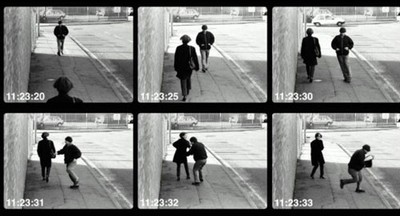Night Time Economy and Crime: Literature Review
![]() Based on a paper entitled The Night Time Economy in the UK, written by Dr. Lesley Mackay and
edited by Dr. Caroline Davey.
Based on a paper entitled The Night Time Economy in the UK, written by Dr. Lesley Mackay and
edited by Dr. Caroline Davey.
For a full copy of this paper, click here. (Microsoft Word document, 286kb)
Summary
The paper addresses literature and recent legislative changes concerning the late night economy. It looks at the difficulties for local authorities and city centre managers, along with the changing leisure patterns in the constantly changing city centres. Challenges are outlined including the heavy drinking of young people, areas of concern and possible solutions. Also considered are the roles of pubs and breweries, violence and ways of controlling it, and recommendations.
VivaCity2020 focussed on creating a sustainable urban environment in the 24-hour city. This includes both day and night functions, which can often prove a challenge for authorities and urban design professionals.
Methodology
Secondary information sources were consulted, including academic, professional and the popular press. Websites were also explored. The late night economy in Soho was examined by the researchers, and four conferences were attended on varying topics relevant to the late night economy in cities. Interviews were conducted with police, council and employees in the late night economy. Interviews were also undertaken with individuals who were involved as consumers and producers of late night economy.
Findings
 The goal of the 24-hour city was developed
as an attempt to replicate European-style cities, with a busy, relaxed and vibrant
atmosphere throughout the day and night. It was seen as important to reassert
the importance of cities in Britain
and improve previous decline. The idea of the 24-hour city was popular with
both the Government and the cities themselves, with a potential for greater
provision of public services including theatres, the arts, museums, libraries,
hotels, restaurants, and casinos.
The goal of the 24-hour city was developed
as an attempt to replicate European-style cities, with a busy, relaxed and vibrant
atmosphere throughout the day and night. It was seen as important to reassert
the importance of cities in Britain
and improve previous decline. The idea of the 24-hour city was popular with
both the Government and the cities themselves, with a potential for greater
provision of public services including theatres, the arts, museums, libraries,
hotels, restaurants, and casinos.
Increasing housing provision became an aim for the 24-hour city, as more individual movement through the streets and use through the evening would mean a natural surveillance of an area, which may lead to increased safety and security.
Along with the rise of the 24-hour city it is also important to look at the rise in alcohol marketing, the binge drinking culture and the increasing fashion to be drunk among young people and adults.
The reality of the 24-hour city in the UK has been found to be far from the European ideal, with conflicts between city residents and members of the pub and club sectors of night time economy.
Issues considered by the research and outlined in more detail in the full document included:
Noise; litter; chewing gum; graffiti; fly-posting; vandalism; street urination and fouling; violence; young people (under 18, 18-25); alcohol; anti-social behaviour; transport; lighting; drugs and drug dealing; fast food outlets; prostitution; CCTV; and residents.
Conclusions
The density of drinking establishments in cities is very high, which could lead to the day-time economy being undermined by the blank facades of evening premises during the daytime. The contribution to the local economy of these drinking establishments, however, is high. The paper also noted a dwindling number of independent pubs, with the majority being part of a wider nationwide chain.
Overview
The regeneration of urban areas is sought through increased investment and development. This involves improving retail, employment, residential provision and the night time economy.
Increasing night time usage of the city leads to unwanted effects, and cities can often become seemingly mono-cultural and intimidating. Violence and injuries has lead to an increased need for policing, which in turn has caused the night time economy to rely on private sector door staff to a greater extent, and there is often concern with the standards of these staff. Initiatives to make cities safer at night include managing taxi queues, plastic glasses in pubs and clubs and many more efforts from numerous sources.


